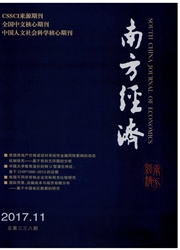

 中文摘要:
中文摘要:
本文比较了非期望产出处理的相关DEA模型的优缺点,通过引入SBM模型处理非期望产出,测算了1990—2006年我国各省区环境效率。结果显示,环境变量的引入明显降低了中国区域的平均效率水平,中西部地区对环境变量的引入较东部地区较为敏感。同时,本文实证考察了经济规模、对外开放程度、地区等因素对环境效率的影响效果,发现这些因素对对于三大地区的作用机理存在差别,并据此给出了一些政策性建议。
 英文摘要:
英文摘要:
After reviewing relative undesirable outputs DEA literatures and comparing their advantages and shortcomings, the current paper introduces SBM models to treat undesirable outputs and then measures the eco-efficiency of each province in china between 1990 and 2006. Some conclusions are as follows: after incorporating in the environmental pollution variables the mean eco-efficiency decreases obviously. The mid-western area has the stronger sensitivity to environmental constraints. Meanwhile, econometric analysis indicates a number of variables that has important effects on eco-efficiency, including variables relating to economy scale, openness, area and so on. We find that these variables have different effects on the three districts. In addition, policy implications are discussed.
 同期刊论文项目
同期刊论文项目
 同项目期刊论文
同项目期刊论文
 期刊信息
期刊信息
